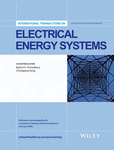A system dynamics analysis of the long run investment in market-based electric generation expansion with renewable resources
Summary
Providing enough generation capacity is a critical issue in power systems, which depends on the amount of invested resources by the firms. Restructuring of the electrical power systems has changed the return on invested costs in a reasonable time into the foremost factor in generation expansion. This study applies the system dynamics technique for analyzing the generation expansion strategies in electricity market. Moreover, the effect of different factors such as interest rate, demand elasticity, and load growth rate are also considered. In this regard, a simulation study of the generation expansion model is performed with a follow-up period of 33 years. Two different reliability indices are taken into account as indicators for generation investment, namely, reserve ratio and reserve variation; while the first one is highly used in the literature the latter one is proposed in this study. The reserve variation approach results in lower price deviations, lower magnitude of price spikes, and lower lost load in the uniform price–based energy market, analyzed in this study. In addition, the effect of extending the wind turbines as renewable resources on generation capacity expansion is investigated. The obtained results demonstrate that integration of the wind turbines damp the severe price fluctuations and gradually takes the place of gas turbines.




